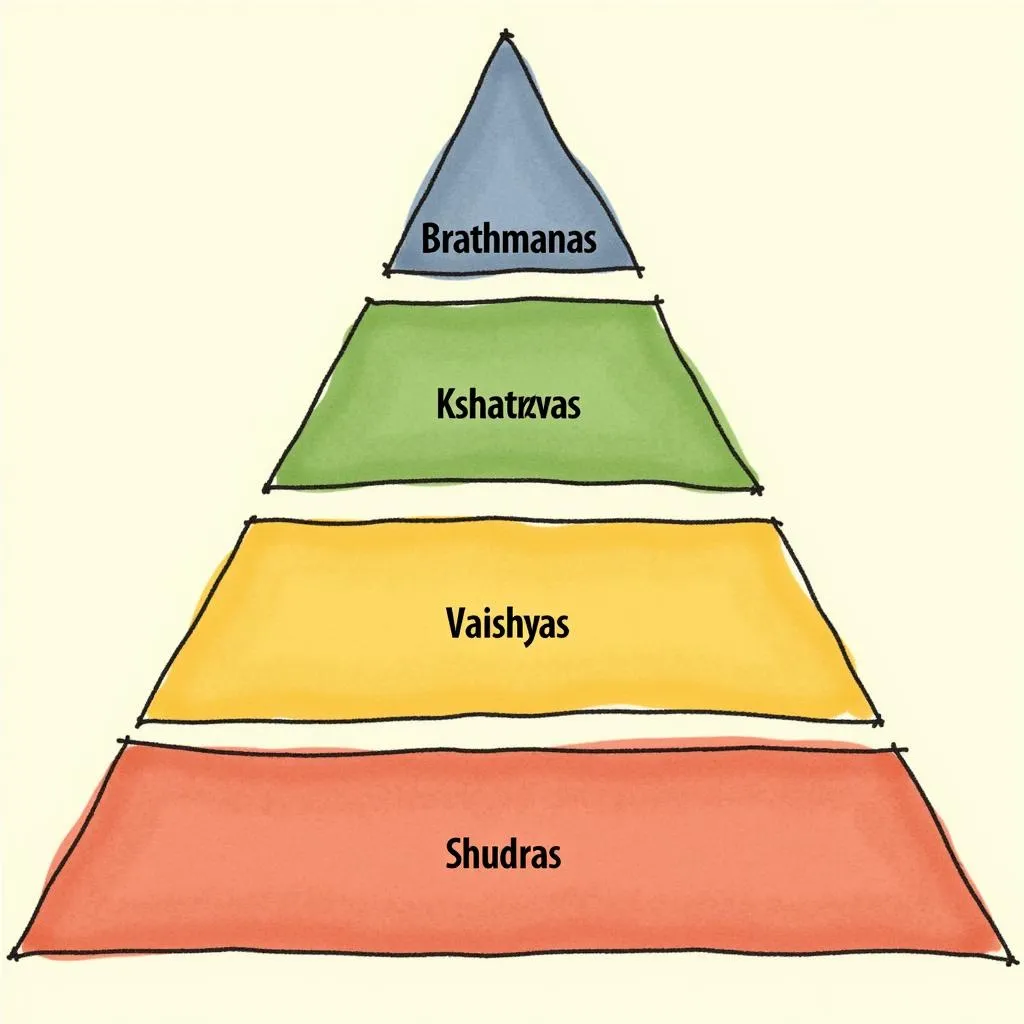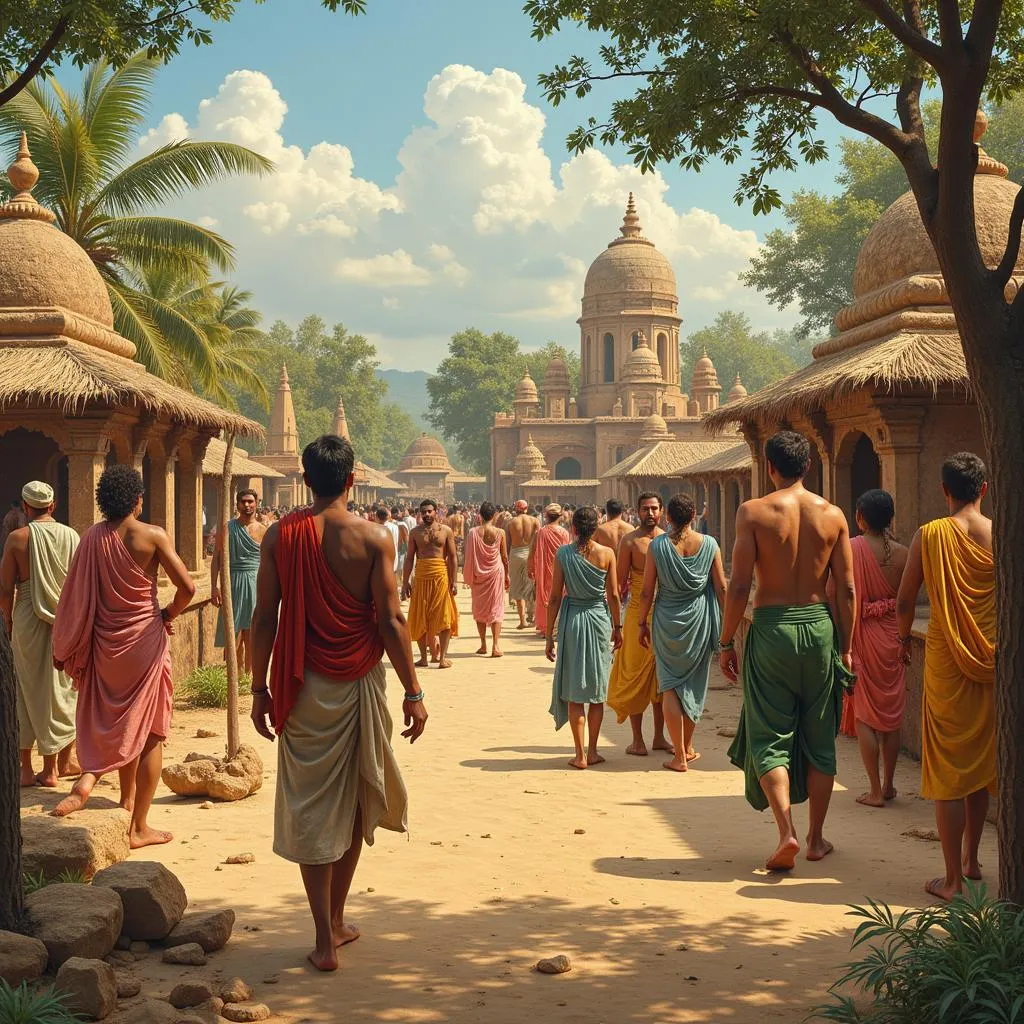The term “Aryan” has a complex and often misused history. It’s crucial to approach this topic with sensitivity and accuracy. While the word “Aryan” originated from an ancient Indo-Iranian root word meaning “noble” or “free-born,” it was appropriated in the 20th century for a horrific ideology of racial hierarchy and genocide.
This article will explore the historical social structure of the ancient Indo-Aryan people, who migrated to the Indian subcontinent around 1500 BCE. We’ll delve into their social hierarchy, occupations, and the evolution of their societal systems. It’s important to remember this exploration aims to understand the past, not to legitimize any harmful ideologies.
Understanding the Vedic Period and Social Hierarchy
The primary source of information about the early Indo-Aryans is the Vedas, a collection of hymns, prayers, and rituals. The Rig Veda, the oldest of the four Vedas, provides insights into the social structure of the time. The society was divided into four main classes or varnas:
- Brahmanas: The priests, teachers, and scholars held the highest position, responsible for religious ceremonies and preserving knowledge.
- Kshatriyas: Warriors, rulers, and administrators formed this class, tasked with protecting and governing society.
- Vaishyas: This class comprised merchants, farmers, and artisans, responsible for economic activity and production.
- Shudras: This class included laborers and service providers, performing tasks to support the other three classes.
 Indo-Aryan Social Pyramid
Indo-Aryan Social Pyramid
It’s important to note that this system was not initially rigid or based on birth. Social mobility was possible, and individuals could move between classes based on their skills and actions.
Evolving Social Dynamics and the Caste System
Over time, the varna system became more rigid, evolving into the caste system. Birth became the determining factor for social standing, limiting social mobility. This shift had significant consequences for social interactions and opportunities. Marriages were restricted within castes, and occupations became hereditary.
Beyond the Varnas: Other Social Divisions
Beyond the four varnas, there were other social divisions, including:
- Jatis: Sub-castes within each varna based on specific occupations or lineages.
- Untouchables: Individuals considered outside the caste system, often relegated to tasks deemed impure. This group faced severe discrimination and social exclusion.
 Ancient Indian Village Life
Ancient Indian Village Life
The Role of Religion and Dharma
Religion played a central role in upholding the social structure. The concept of dharma, duty or righteous conduct, emphasized fulfilling one’s role within their designated caste. This belief system aimed to maintain social order and stability.
Challenging the System: Reformers and Movements
Throughout history, reformers and movements emerged to challenge the inequalities of the caste system. Buddha, for example, advocated for a society based on compassion and individual merit, regardless of birth.
Conclusion
While the ancient Indo-Aryan society provided a foundation for cultural and societal development in the Indian subcontinent, its evolution into a rigid caste system resulted in social stratification and discrimination. Understanding the complexities of this history requires a nuanced approach, acknowledging both the achievements and the injustices that shaped the course of a civilization. By studying the past, we gain valuable insights into the present and can strive for a more just and equitable future.